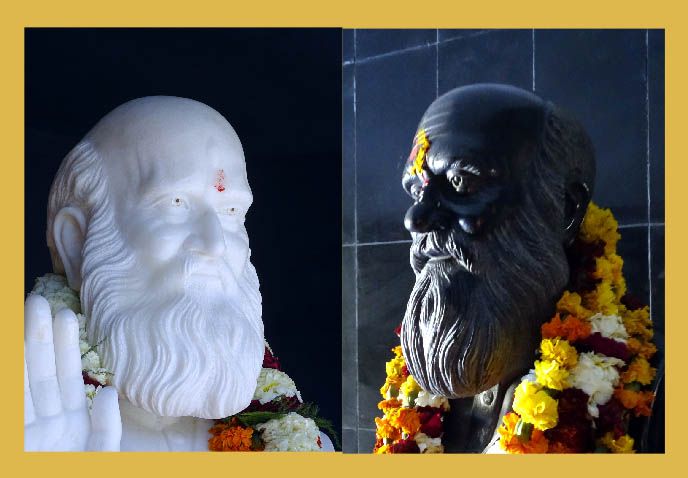By Laura Graham
Mahashivratri was a bit later in 2024, and we found ourselves in the beautiful land of Bhairava Nagar as spring blossomed. Throughout the gardens, flowers opened their cakras to the sun, every colour represented in an exquisite display of the beauty of nature. From this bounty, each day we were tasked with the joy of creating malas. Rohit asked for a mala for Shin and Shakti for the Wind Hall, and one for Shin’s chair in the little red room, beneath Shin’s apartments, and there would be many more malas needed for the inauguration of the statues of Shin and Nagaraj.
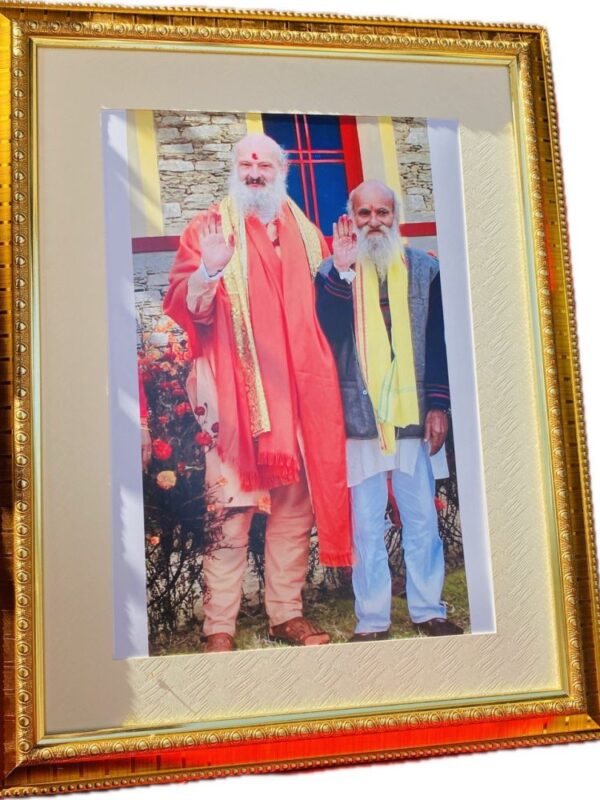
As we progressed through the 10 days, anticipation built around the unveiling of the statues. The days progressing so fast, with such beautiful unfolding work supported by Shin’s chalk drawings, Yohan’s corresponding exercises and preparations for Mahashivratri that the day of inauguration was upon us before we realised.
It was a question, how would the statues look? Should we even have statues? It is unusual to see statutes to human beings in India. We did not know what to expect, nor how it would feel to see life sized statues of Shin and Nagraj. I was a bit apprehensive, and slightly disturbed at the idea of Shin hewn in stone.
On the morning of the inauguration, the morning of Mahashivratri, there was considerable excitement. The local families and workers treat this beautiful, profound festival in much the same way as we treat Christmas. It is a family festival, children are given presents and families gather, so the joy, fun and sanctity of the festival came together in the most auspicious way to bless and inaugurate these beautiful works of art.
In a procession of joy, replete with drums and music together we progressed along the avenue from the house of Shin to the Temple grounds. The sacred home of Shin’s statue is located to the right of the Temple, in a repose so contained, peaceful and complete that Shin’s presence could be felt. A Brahmin priest came from Rishikesh to bless the statues, assisted by our Pandit ji. The marble felt enlivened, the presence of Shin tangible.
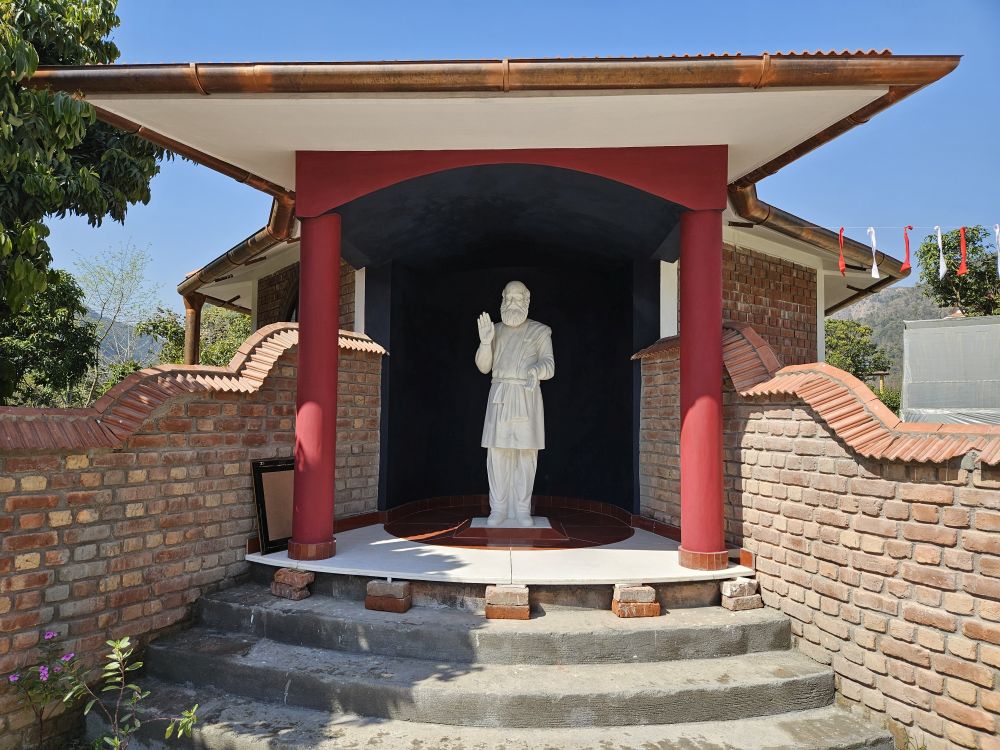
It is a vision that astonishes, and a place that invites one to sit, and contemplate. His figure stands relaxed, full height, a benign expression on his face, His right hand held up in blessing. He looks like a great philosopher, certainly in our cultural experience, exactly these people have statues to honour them. But Shin’s feels different. Perhaps because I knew Him, we all knew Him. His figure is reassuring, loving. It is a joy to have a sense of Him standing in our presence.
I can imagine myself coming each year, sitting at his feet, contemplating and speaking to Him. It is a place of beauty, sanctuary, acceptance, love. It works.
As the sun shone down on us, the honouring of Shin’s statue took on an almost dreamlike quality as mantras were intoned, and many malas were draped around His neck. Even in March the heat of the sun in India is brutal, and burns, some of us shifted, trying to find areas of comfort and shade with the hard standing around the shrine acting like a magnifier. At one point, the tree just behind Shin’s statue hosted a chorus of tiny, long tailed parrots. As messengers of God, they made their presence felt. All of nature seemed to be honouring the inauguration, giving its own blessing.
After some time, silence descended, the inauguration of Shin’s statue was complete. Some people began to move towards the other end of the complex, towards the Naga Temple, then the drums struck up again, and the procession came alive as Yohan led the dance.
I stood for a while, finding it hard to leave the image of Shin standing before me.
By the time I reached the Naga temple and managed to get inside, it was full of people. The villagers and workers thronged in to see the statue of Nagaraj ji. Smaller than Shin’s statue, both being life size, this statue was a true depiction of the man, but in black marble. The effect is powerful, a fitting tribute to a man who embodied that particular Hindu honour, the ability to stream the energy of a God; according to those who saw the energy come into him, it was quite incredible and had to be seen to be believed.
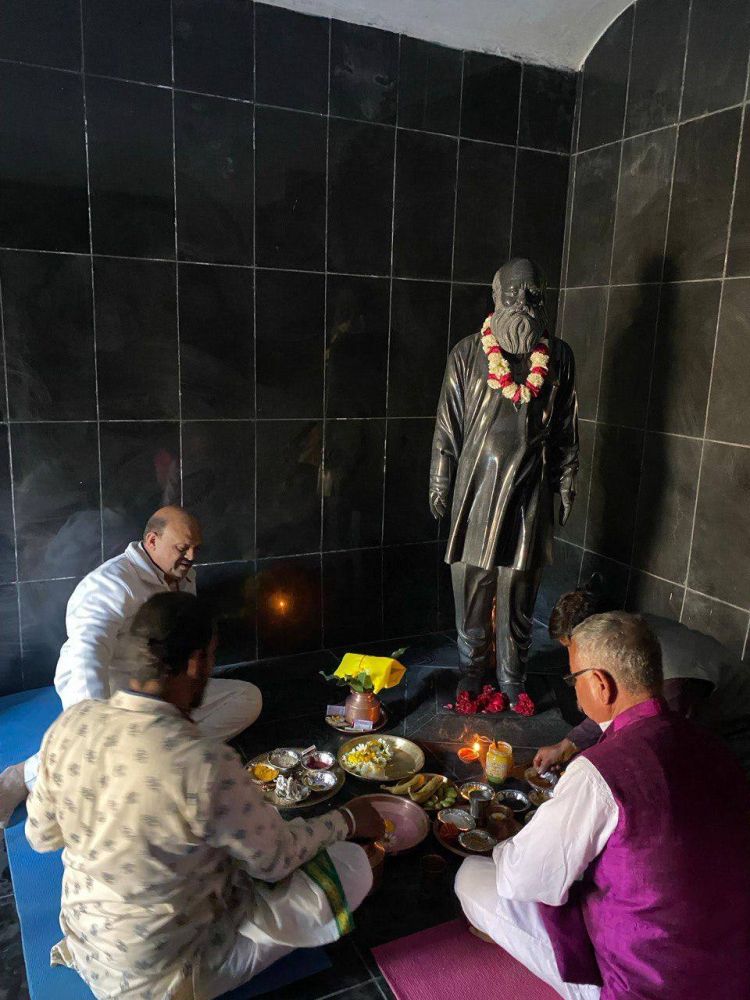
Acknowledged and honoured by Shin, this unassuming village elder had brought authenticity and deep connection to the land, the Ancestors, and the Gods during his time on earth and the Brahmin priest from Rishikesh proceeded to honour and bless the statue with the same lengthy mantra first given to Shin’s statue, intoning the many names of God, then blessing the statue, and finally dressing it in malas.
I reflected on the times I had seen Nagarj ji. He was a small man with a huge aura, and personality. He was very much loved. It takes time for Europeans to understand the cultural significance, depth of feeling and reverence that our Indian family has for people blessed in this way, people who seem to be able to stream Gods but we can honour in a different way, and so a second honour is added, Nagarj Ji’s statue will stand in his memory in the Naga Temple, it will stand the test of time, for eternity, acknowledged and honoured by all who visit.
The inaugurations were complete.
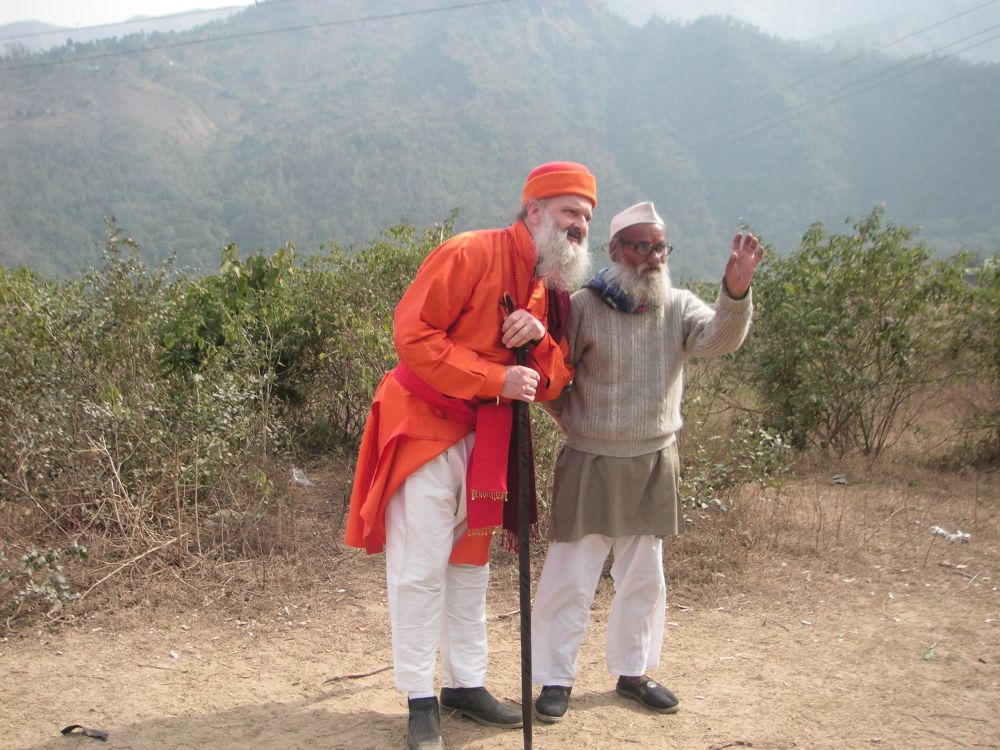
The statues bring a profound sense of presence to the areas in which they are placed, and they bring a special focus. As Colin, my husband said, 200 years from now people will visit this amazing Temple and wonder who created it, and be shown to a white marble statue of a Swiss man, to be shown the statue of Shin, and they may ask why? and who was he? And learn of His teachings, and share the Truth that Shin came to teach.
That is the power of statues.
Later that evening, when we moved to the Naga Temple to celebrate Mahashivratri, some amongst us said they saw Nagaraj Ji’s statue move. Did it move? The light can play tricks, but the effect on the black marble, in the dark temple, light playing from a thousand candles created an astonishing effect. That, and the sense that there could be Naga’s just below the floor of the anteroom in the place reserved for these great beings, created a scintillating and enervating sense of potential. It was the perfect backdrop to our entry into the inner sanctum of the Naga Temple for the exact moment of Mahashivaratri.
We passed the guardian. It was sacred and humbling.

